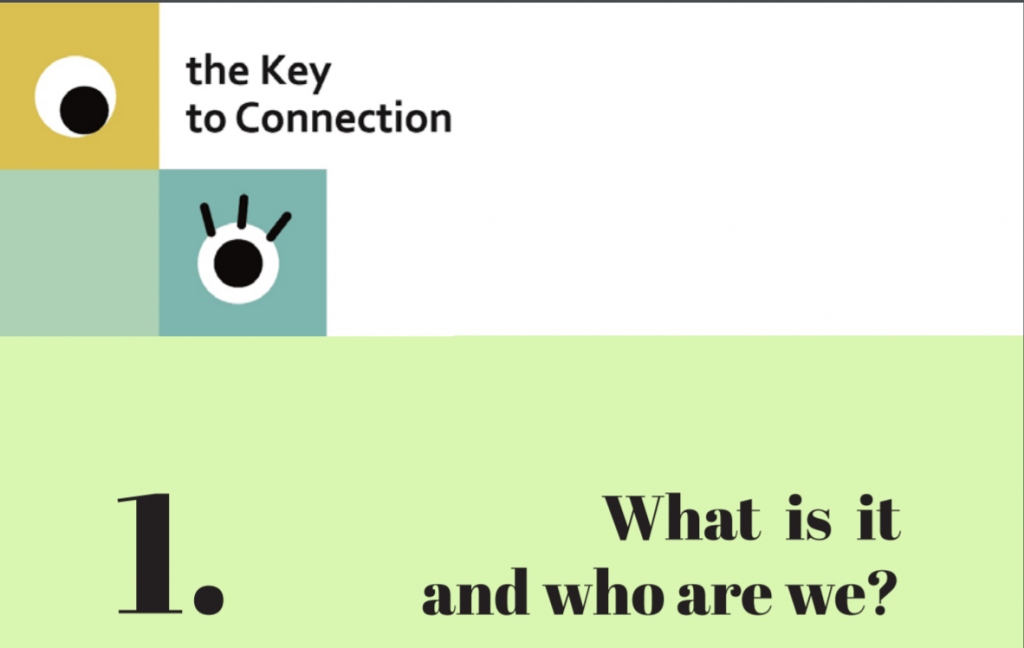
When looking back at the year we make a list of the good things what have been done, LAUKKU can mention an initiative and participation of journey where dance practitioners, youth workers and young people from Bulgaria, Greece, Poland, and Latvia cooperated to find new methods of kinesthetic learning. This journey – more than two years long, was called the Key to Connection and could happen with the support of Erasmus+ program. It will end together with 2021.
Kinesthetic learning or learning through movement is an essential part of self-development, what allows better to get to know self, lets experience the connection of body, mind, and sensing. In two years’, long process included classes, workshops, laboratories, seminars both among the experts but also together with the young people. LAUKKU cooperated with Rauna Municipality where youth workers and teachers collaborate to blend non-formal education in the formal. The activities of the project were integrated in the daily school schedule. Soon enough young people found themselves that activity what we did, also was a learning process just “more fun”. Through games, and movement tasks together we learned to understand what diversity is, how great that we all are not the same and how to support each other in their fragility.
Here I will mention just few reasons of many why did we developed methods specifically for kinesthetic learning:
- We use kinesthetic learning to sharpen kinesthetic sense – sometimes called memory of muscles. Kinesthetic sense is a powerful tool to connect with self and the world we live in. Body knows a lot. It knows the location, size, volume of body parts, distance, balance, weight, gravity. It has its own sense of timing. It adapts rhythm, timing to our reflexes and organize movements in a sequence to do our activity fluently and as natural as possible. “Of course, it is like this!” We say. “I do not need to develop this as it works naturally!” As it seems.. But only being aware of body and its movement we can learn and use some of its potential. We can learn about our relationship with trust, tension, balance, openness, ability to listen and observe, perception off diversity etc. Kinesthetic learning invites us to trust our body, who knows and mind which allows to be aware of this wisdom.
- Movement is a part of communication. 70% of our communication is non verbal. Through movement we can communicate not being restricted with culture, social, intellectual or physical differences. It is the most democtratic language, like Superpower what we have forgotten.
- Kinesthetic learning is based on coproduction. Both, teacher, and learner are connected, engaged and interacting to achieve the goal. The teacher is not an authority which is obeyed without questions. He/she is rather facilitator who creates environment for learner to experience, learn from the experience and then exchange thoughts to understand and digest the learning outcome.
- Kinesthetic learning helps pushing physical and psichological boundaries. When we can do something after practicing we can get to new level, ready to do something more. Being in a group kinesthetic learning promotes such qualities as trust and relaxation, empathy, listening, self expression, openness etc.
The participants of the project experimented, created, tested methods both face to face and in digital reality when the process was affected by Covid 19. All the methods as well as the documented process of the project was collected in one Digital Reading Material, what is supposed to be a Tool Kit for those who work with young people and kids and believe in power of kinesthetic learning.
The Digital Reading Material consists of description of structured movement classes with the notes from creators and expected learning outcomes; theoretical material about kinesthetic learning; chapter about the competences we focused on while created the movement exercises; information about the groups of youngsters we worked with as well about the participants of the project and organizations they represent.
Please, download the Digital Reading Material the-key-to-connection_Erasmus.pdf (laukku.lv), check it out, test some exercises with your kids and come back to us with the feedback! (ilzezirina@gmail.com) We are looking forward to translating it in Latvian and make some improvement of the material. So, please, help!

We go further, continuing to seek, value, and nurture relationships, believing that this is the key to a better world…

the Key to Connection is implemented in the framework of Erasmus+: Youth in Action program – key action 2, Strategic Partnership for exchange experiences.
